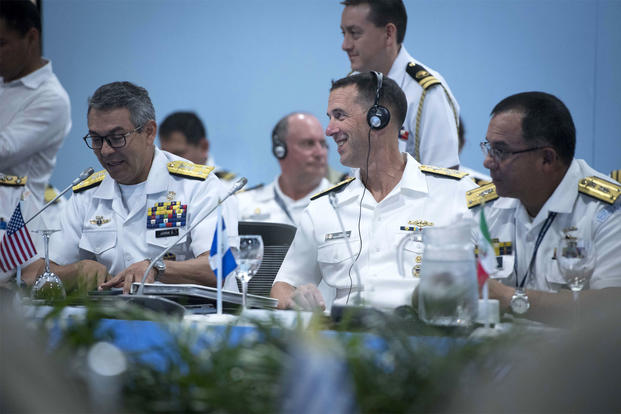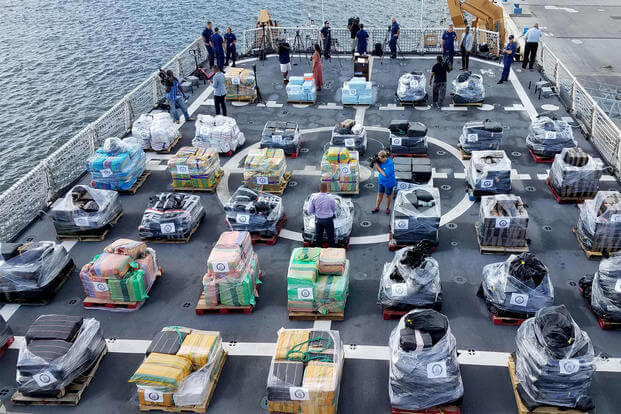The Navy's top officer met with maritime leaders from across the Western Hemisphere this week, as they work to thwart drug trafficking that's led to security and humanitarian challenges throughout the region.
Chief of Naval Operations Adm. John Richardson met with his counterparts from Mexico, Peru, Chile, Colombia, Canada, Argentina and Brazil during a two-day conference in Cartagena, Colombia. Military leaders from 18 countries participated in the event, where they discussed strategies to combat drug trafficking.
The countries involved not only share common security challenges but also a commitment to confront them, Richardson said during his remarks.
"We have many common maritime challenges," he said. "The best thing to do is to be the best possible partner to our friends and allies."
The military has worked for years with partner nations to stem the flow of drugs making their way toward the U.S. border. The Navy and Coast Guard send ships and personnel to patrol waters and interdict drugs at sea. Marines train with local troops in Honduras, Guatemala, Belize, Peru and Mexico who fight drug cartels in the jungles or on brown rivers. And U.S. troops team with allies during annual exercises such as Tradewinds in the Caribbean or UNITAS in the Pacific.
Partnering on those efforts highlights the shared security interests between the U.S. and its allies in the region, Richardson said.
"We can learn to communicate, navigate and operate together," he said. "[But] these deployments also serve a higher purpose -- they enhance security, they maintain order, they preserve a system that is legal, transparent, and fair for all nations, and they promote prosperity for all."
Richardson named strengthening the Navy's partnerships as one of his four "lines of effort" in his 2016 document on maintaining maritime superiority. The 2018 National Defense Strategy also lists partnerships and strong alliances as the "backbone of global security."
The naval conference took place as several South American partners -- Chile, Colombia and Peru -- participate in the Rim of the Pacific exercise in and around Hawaii. RIMPAC is the world's largest maritime exercise, and a Chilean naval officer is making history during the event.
"Commodore Pablo Niemann serves as the Combined Force Maritime Component Commander -- in effect, commanding all maneuvering afloat forces in a series of high-end warfare missions," Richardson said. "This RIMPAC is a landmark -- partners achieving their maximum potential naval power [and] improving together."
-- Gina Harkins can be reached at gina.harkins@military.com. Follow her on Twitter at @ginaaharkins.












